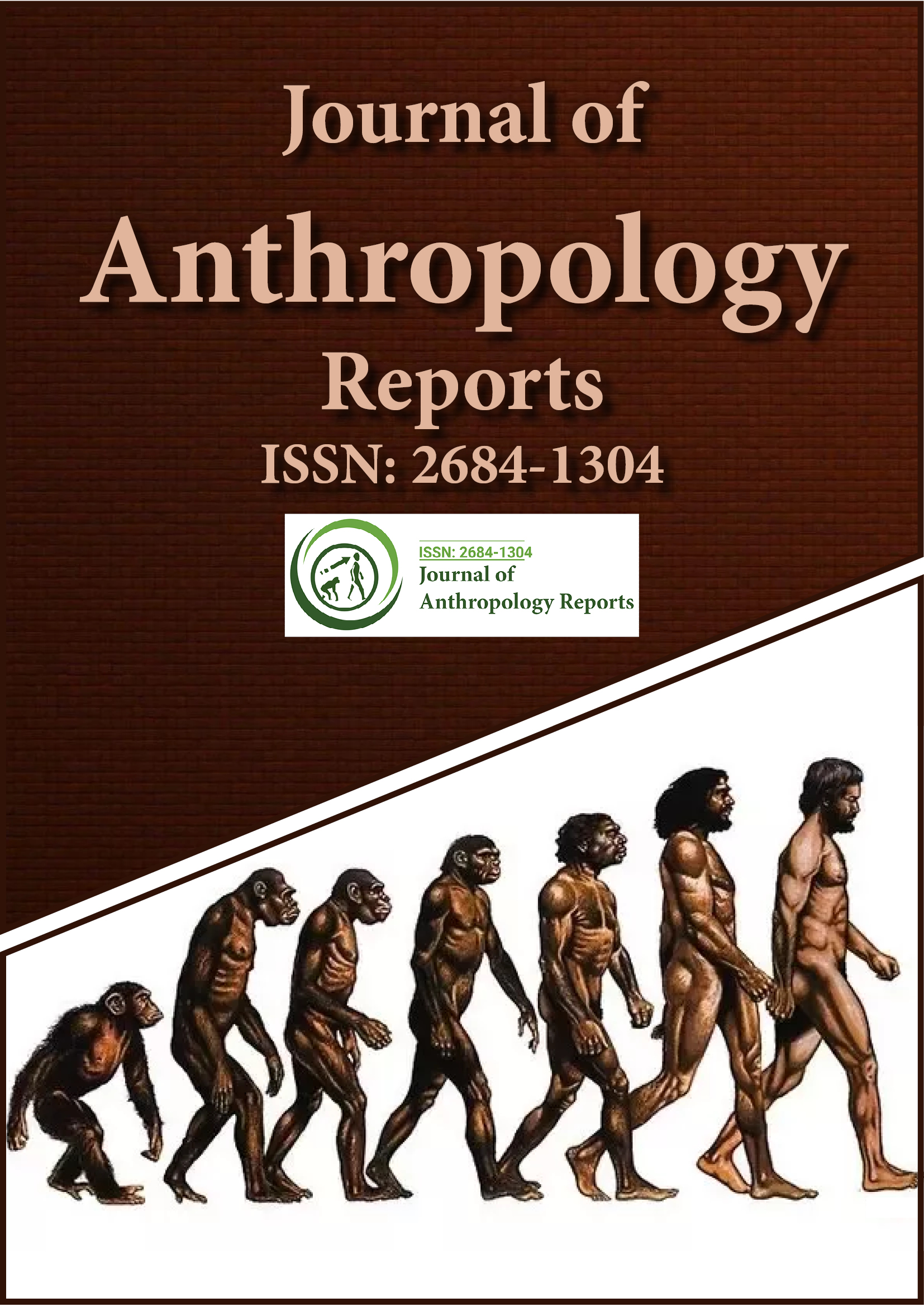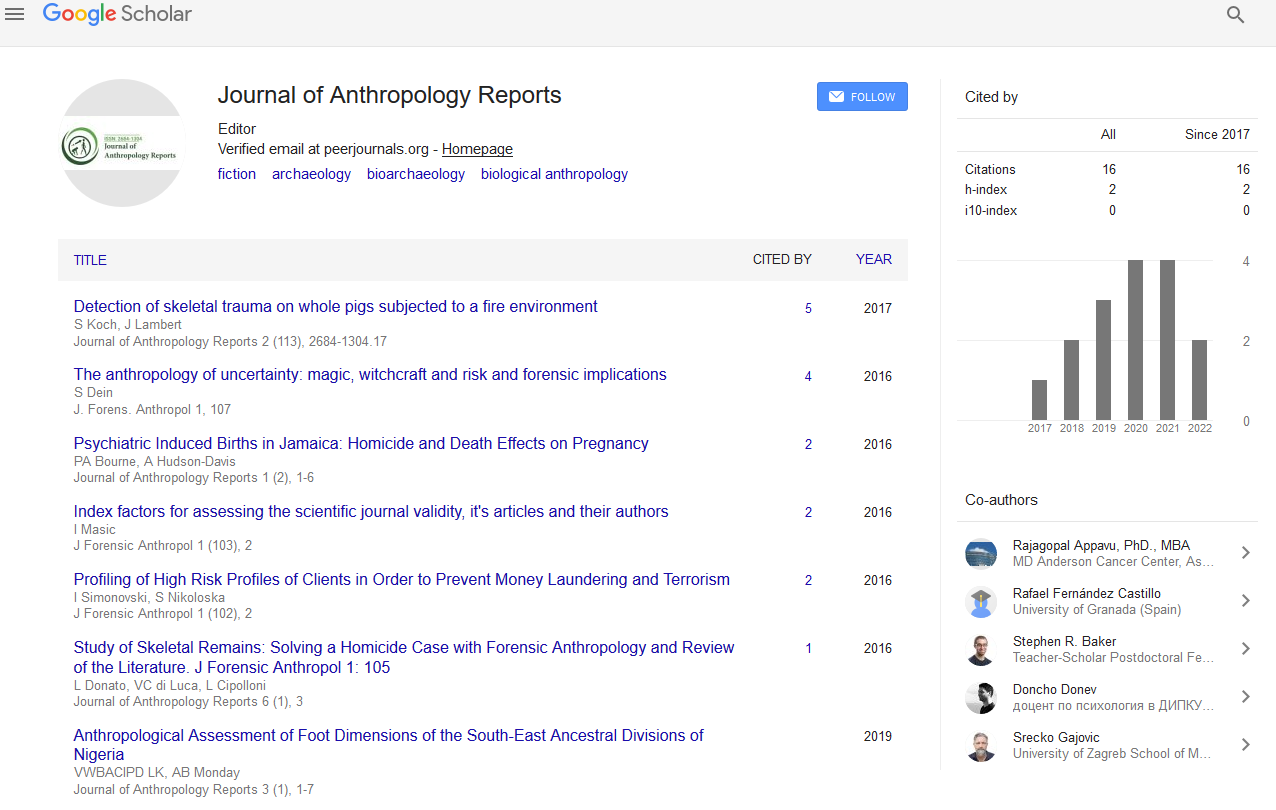Indexed In
- RefSeek
- Hamdard University
- EBSCO A-Z
Useful Links
Share This Page
Journal Flyer

Open Access Journals
- Agri and Aquaculture
- Biochemistry
- Bioinformatics & Systems Biology
- Business & Management
- Chemistry
- Clinical Sciences
- Engineering
- Food & Nutrition
- General Science
- Genetics & Molecular Biology
- Immunology & Microbiology
- Medical Sciences
- Neuroscience & Psychology
- Nursing & Health Care
- Pharmaceutical Sciences
Opinion Article - (2022) Volume 5, Issue 3
The Museum Serves as a Learning Center for Archaeological Education
David Jeevendrampillai*Received: 02-May-2022, Manuscript No. JFA-22-17076; Editor assigned: 04-May-2022, Pre QC No. JFA-22-17076(PQ); Reviewed: 20-May-2022, QC No. JFA-22-17076; Revised: 27-May-2022, Manuscript No. JFA-22-17076(R); Published: 07-Jun-2022, DOI: 10.35248/2684-1304-22.5.127
About the Study
The Asiatic society has a requirement to hold the many oddities that have been collected as a result of its members collecting archaeological, ethnological, geological, and zoological specimens since the establishment of India's first museum collection in 1796. The Indian museum in Calcutta, which opened in 1875, was the first significant museum to be created. The oldest Indian museums date back over a century and include sections dedicated to art and archaeology, as well as galleries dedicated to geology, biology, anthropology, and other sciences.
The statement of Markham and Hargreaves 1938 is correct by adding significantly to India's history and arousing worldwide interest in its art and antiquities, the Archaeological Survey's discoveries have sparked feelings of nationalism and drawn Indians' attention to the importance of preserving their archaeological treasures, which have the added benefit of being more durable than most material.
India's museums serve to a wide range of audiences thanks to their dynamic, multidimensional approach. India as a country’s economic development has a plethora of museums and learning centers. As stewards of our heritage, these museums are taking the appropriate steps to educate the current generation about their rich history and culture. The potential significance of museums as a vehicle for disseminating information about ancient societies and civilizations can be shown. The voluntary phenomenon of visitors self-directing their learning in a museum space is a voluntary phenomenon of gathering knowledge and becoming educated about material culture.
Museum collections remain the core of the institution, but their worth can only be understood when they are adequately translated for museum visitors. Simply entering a museum or exhibition space does not guarantee that the visitor will learn or be informed. As a result, interpretation is seen as a fundamental notion that can help a museum fulfill its teaching mission. Everyone in the museum has access to knowledge, but it is up to them to decide how much to deduce, learn, or assimilate. As a visual narrative that may contribute in the development of a defined learning module, the exhibition is a learning source in and of itself.
Museums are places of wonder, entertainment, and learning. As a result, the museum becomes a crucial location where genuine items can be interpreted, seen, shared, and understood all at the same time. Although museum learning is always partially cognitive, it is largely affective, focusing on changes in the learner's interests, attitudes, or judgments as well as the cognitive content.
Because education is an unpredictable occurrence in which no single method of knowledge transmission can be determined, one must be open to any and all bits of information or ideas that can be gathered and applied as an effective method. In the context of museums and the programmes presented, edutainment is a better term. In India, museums have evolved into active promoters of history and cultural variety over the last two decades. In this museums such as the IGRMS in Delhi have been active in attracting audiences of all cultural backgrounds by hosting picture exhibitions, interactive activities, heritage corners in schools, and operating programmes such as Friends of the Museum.
Similarly, museums in Tripura, such as the State Tribal Museum, have unique interactive kiosks and programmes that depict and promote the region's rich and diverse communities. Studies on the educational benefits and effectiveness of museum programmes in connection to school visits and young visitors are being undertaken all over the world. Because learning is not compartmentalized but ongoing, there must be continuity between the school, the family, and the community. The informal teaching learning experience that takes place inside the museum serves as a tool for youth's long-term cognitive growth, since they are the future stewards of our legacy, and it requires active engagement.
Conclusion
Museums will be the unlimited classrooms of the future, and the impact they will have on future generations will be invaluable in protecting and promoting tradition. Museum learning takes place in a variety of platforms, with exhibitions being the most prominent. Museums, without a doubt, can give a new dimension to archaeological research and help people understand the process better. They are true living heritage vehicles and a valuable resource for promoting and disseminating a country's culture and civilization.
Citation: Jeevendrampillai D (2022) The Museum Serves as a Learning Center for Archaeological Education. J Anthropology Rep. 5:127.
Copyright: © 2022 Jeevendrampillai D. This is an open access article distributed under the terms of the Creative Commons Attribution License, which permits unrestricted use, distribution, and reproduction in any medium, provided the original author and source are credited.

